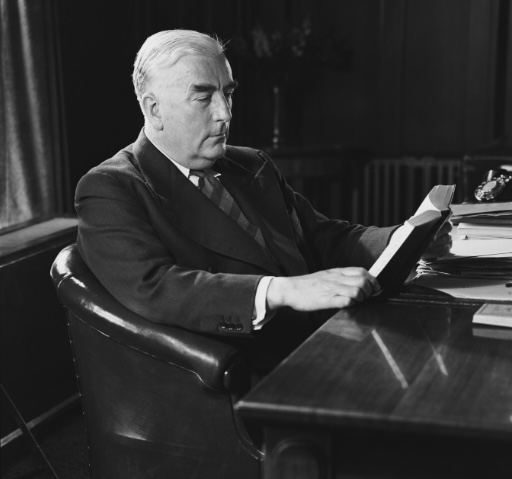On this day, 26 September 1951, Treasurer Arthur Fadden hands down a harsh deflationary budget amidst much criticism from the press, Opposition, and wider Australian electorate. The budget was the first ‘explicit attempt in Australia at Keynesian demand management’. It has since been hailed for its political bravery and long-term success, though some maintain that it was ‘too much, too late’.
The budget’s controversial measures were delivered in response to the massive inflationary pressure caused by the Korean War wool boom, where American demand for woollen uniforms drove up the price of what was then Australia’s major export. According to the Keynesian orthodoxy of the day, in times of such intense prosperity governments needed to raise taxes and cut spending in order to keep the economy on an even keel. In the long run these tactics were successful in helping to facilitate the record prosperity of the Menzies era, but in the short term they caused immense pain, particularly for small businesses which were meant to be part of the Liberal Party’s core constituency.
Fadden told the House of Representatives that ‘the financial operations of governments can, if appropriately directed, do a great deal to redress unstable conditions developing within the economy … modern thought on the relation of public finance to economic stability is quite clear … that, in times of excessive demand and scarcity of labour, governments should draw away from the public in taxation and loans more than they spend for current purposes’.
Fadden’s budget imposed a 10 per cent income tax levy on all income levels, increased company and sales taxes, and cut public servant numbers. The budget papers forecast a 33 per cent increase in overall taxes for 1951-52 and a surplus equal to 3 per cent of national income. The Government avoided increasing interest rates, which would be the modern response to such inflationary pressure, because to do so would punish those who had bought war bonds, investing their own money in Australia’s successful defence. This was a matter of intense principle, on which Menzies would not bend. There was also the option of appreciating the pound, but this would hurt rural export interests and could well have backfired if the high export prices proved temporary.
Though there are now intense debates over the merits of a Keynesian approach, the horror budget showed remarkable political courage in prioritising Australia’s long-term interests over short term political popularity. The only caveat is that some people have argued that the measures could have been introduced earlier and if so they would not have needed to be quite so harsh. In modern times Keynesianism is associated with electorally popular inflationary spending to help the economy out of difficult times, but it was only by being prepared to introduce the corresponding brakes in good times that the system functioned properly in the post-war era.
The Menzies Government benefitted from the fact that the previous election had been held earlier that same year, hence they had a lot of time to politically recover from the criticism the budget drew. Even so, in the next election they suffered a significant swing against them with the Labor Party receiving more than 50% of the primary vote but failing to win enough seats to topple the Government. The real rewards for the long-term thinking would be reaped in the 1955 and 1958 elections where, admittedly with the help of DLP preferences, the Coalition achieved back-to-back landslides.
Further Reading:
John Hawkins, Arthur Fadden: Treasurer in a Golden Age, 2015.
Michael Stutchbury, ‘Government to take fiscal U-turn 70 years after “horror budget”’, Australian Financial Review, 10 May 2021.
T.M. Arklay, Arthur Fadden: A Political Silhouette, PhD Thesis, Griffith University, 2011.
Sign up to our newsletter
Sign up for our monthly newsletter to hear the latest news and receive information about upcoming events.


